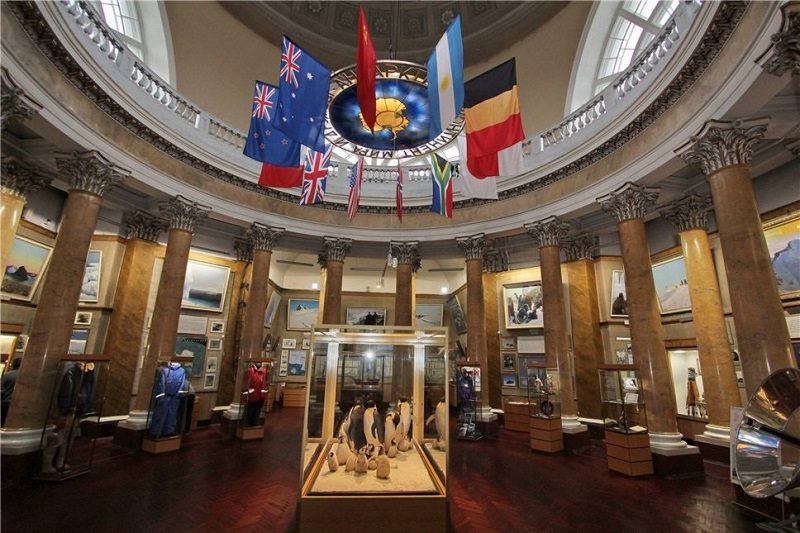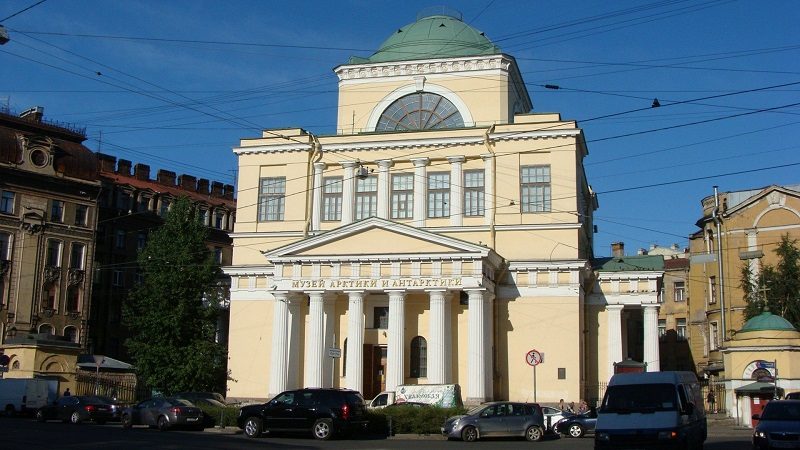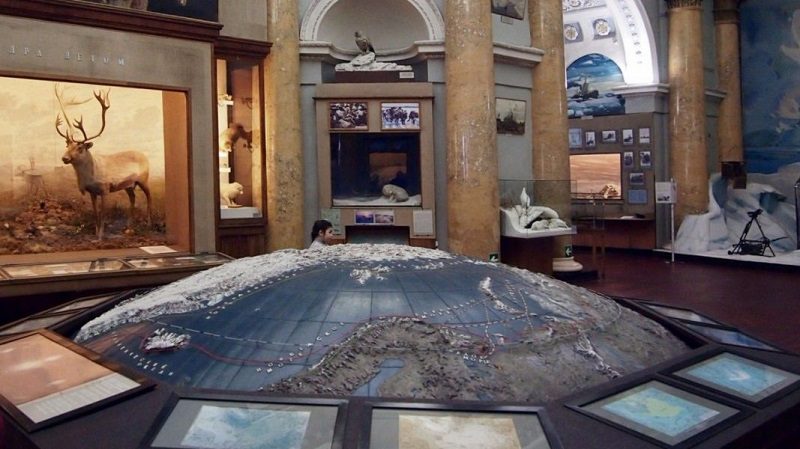The Museum of the Arctic and Antarctic in St. Petersburg

Address: St. Petersburg, ul. Marata, 24a
Metro: Vladimirskaya, Dostoyevskaya, Mayakovskaya
Description
The Museum of the Arctic and Antarctic in St. Petersburg is a large interesting museum, which has a high rating not only among Russian museums, but all over the world.
A huge collection of exhibits consisting of written and cartographic documents, photographs, instruments, equipment of polar explorers allowed the staff to create a unique exposition of the museum.
The discovery of the Northern Sea Route and the development of the Arctic is a goal that has been confronting Russians for centuries. After the development of the Russian North (the territories of the present Leningradskoy, Arhangelskoy, Vologdskoy, Kirovskoy regions, Karelia and the Permsky Territory), researchers moved further to the ice of the Arctic Ocean.
After the establishment of Soviet power, the task of developing the Arctic was raised to national importance. Active work began in the 1920s.
At the same time, scientists began to make proposals for the creation of the museum. Only in 1930, a basement room at the All-Union Arctic Institute was allocated for it. This was not enough. A few years later, VAI received the building of St. Nikolskaya Church for rent. It is a complete reconstruction, and in January 1937 the museum was able to receive the first visitors.

Researchers, scientists, teachers of the institute took an active part in creating the exposition. In the future, any event in Artik or Antarctica was displayed in museum exhibitions. Employees sought to talk in a timely manner about important polar expeditions.
The Russian State Museum of the Arctic and Antarctic is located on 2 floors: the first is entirely devoted to the territory around the North Pole, the second to the mainland of Antarctica and the South Pole of the Earth.
The exhibits on the first floor are divided into 2 expositions: “Nature of the Arctic” and “History of the exploration and study of the Northern Sea Route”, the latter, in turn, has 2 different vectors of museum narration:
The development of the Arctic in the XX and XXI centuries. The path from the first drifting tent station "North Pole" / "Severny Polyus" to the modern Arctic complexes of our days;
The first expeditions to the Arctic Ocean. The long way from the discovery of Siberia by Yermak on the march of 1581-1585 before the expeditions of the early 20th century on the ships "Yermak", "Krasin", "Chelyuskin" and others.
The first section of the modern museum exposition is completely devoted to the nature of the Arctic. The walls of the hall are decorated with paintings by famous Russian artists depicting the beauty of the polar belt and the masculinity of researchers.
The layout “Arctic” attracts attention - a part of the globe with a relief image of the northern hemisphere. At its creation cards of academician Shokalsky were used. A number of dioramas give a complete picture of the Arctic nature, fauna and flora of the region. Especially remarkable: "walrus rookery", "Tundra in the summer", "Tundra in the winter", "Bird Market".
Two white bears “live” on the territory of the museum, one of them greets visitors right at the entrance, in the “Nature of the Arctic” hall. Visitors can estimate the size and their relationship with the owner of the white ice desert.
The exposition of the next section tells about the history of navigation in the Arctic. And it began in the sixteenth century. This is evidenced by the clothing of seafarers-polar explorers and the preserved part of the front end of the sailing-rowing vessel.
V. Bering, F. Wrangel, F. Litke, V. Chichagov, A. Nordenskiöld, O. Schmidt made a significant contribution to exploring and studying the Arctic. Among the exhibits of the museum, the amphibious aircraft of designer V. B. Shavrova. With the help of "SH-2" conducted more than one ice reconnaissance.

It also housed the models of the nuclear icebreaker "Lenin" and "Arctic". From the first icebreaker "Yermak" are represented the steering wheel and the ship's compass. The diorama “Magnezia” is interesting, showing to visitors one of the largest trading floors in the North of Russia.
A small hall is dedicated to the history of the Chelyuskinites. "Chelyuskin" - icebreaking ship, the accident of the crew which has become widely known. In September 1933, the ship was trapped by ice in the Kara Sea. After a five-month drift in February 1934, the hull of the vessel was crushed by ice and sank. The crew of 104 people, anticipating this outcome, unloaded the deck cargo, removed the boards from the steamer. From the available materials saved from the ship, barracks were built in which people spent 2 months in the conditions of the polar winter.
With the help of light aviation in several stages in the spring of 1934, all crew members were delivered to the mainland. All the pilots involved in the evacuation received the title of “Heroes of the Soviet Union”, the Order of Lenin and the Order of the Red Star were received by all crew members and other participants in the rescue action.
In the center of the second hall is an exhibit of the museum, which makes one think about the incredible strength, courage and bravery of the first polar explorers. The tent with the USSR inscription is the first polar drifting research station in the world. It’s difficult to imagine how in such conditions, at a constant subzero temperature, people not only lived, but did research, it’s difficult for today's spoiled person.
However, the feat of the Papanins (on behalf of the station manager, I. D. Papanin), who spent 9 months (274 days!) At the North Pole-1/ Severny Polyus -1 drifting station, opened new horizons for studying the ice of the Arctic. The exhibits are genuine things of polar explorers, household items and research tools.
Further, moving to the right, visitors will pass the path of development of polar stations, see how they looked in the 70-80s of the XX century, as they are arranged in our days. At the end of an informative walk through the exposition of the first floor, a small reward awaits everyone: the “Northern Lights”Severnoe Siyaniye mock-up.
Going up to the second floor, before entering the hall of the main exhibition "Antarctica", visitors are offered to get acquainted with the craft of the peoples of the North - bone carving. The display windows exhibit unique exhibits created by craftsmen of Chukotka and Yakutia.
The exposition of the second hall is completely devoted to the nature of the sixth continent, first of all to its charming inhabitants - penguins, as well as the history of the research and to the Russian stations Mirny and Vostok.
The Antarctic stations Mirny and Vostok were founded in 1956 and 1957, respectively, and named after the boats, in which, in 1820, Russian seafarers approached the shores of Antarctica as part of a round-the-world expedition.
Among the exhibits are research tools, elements of station equipment and other authentic specimens, which arrived at the museum 14,893 kilometers, and that is how much separates St. Petersburg from the Mirny station.